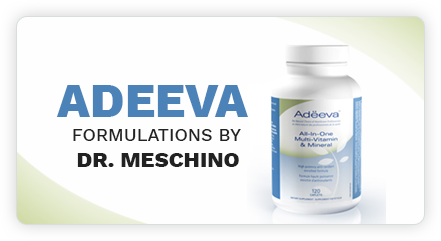
LMU 149 – Unveiling the Paradox: Statin Drugs, Muscle Pain, and the Vitamin Solution
Source: American Journal of Physiology: Cell Physiology (October 2019)
Lifestyle Medicine Update (Nov 16, 2019)
Introduction:
Statin drugs, like Lipitor and Crestor, have become household names in the fight against high cholesterol, a crucial battle to reduce the risk of heart attack and stroke. Their widespread use is evident, with over 25% of U.S. adults aged 45 and above reportedly using statins in the last month alone – a tenfold increase since the late ’80s and early ’90s. These drugs have indeed proven effective, but they carry an unwelcome side effect: muscle aches and pains. In this article, we explore the paradoxical relationship between statin-induced muscle pain, exercise, and the promising role of three vital vitamins – Coenzyme Q10, Vitamin E, and Vitamin D.
The Perplexing Problem: Muscle Pain and Statins
For approximately 11% of statin users (some reports suggest even higher percentages, up to 25%), muscle pain is an unwelcome companion on their journey to lower cholesterol levels. What’s more, this muscle discomfort is often exacerbated or triggered by exercise, a critical component of heart disease and stroke prevention. It’s a perplexing paradox – exercise is promoted to boost heart health, but statin users are warned against it to avoid severe muscle pain.
Cracking the Code: The Cause of Statin-Induced Muscle Pain
In recent years, researchers have delved into the depths of this mystery to uncover the cause of statin-induced muscle pain and, more importantly, to discover potential preventive measures. The findings are illuminating: statin drugs not only lower cholesterol but also impede the synthesis of Coenzyme Q10, a critical compound in energy production within muscle cells. This CoQ10 deficit results in several detrimental effects:
- Energy Deficiency: Decreased CoQ10 levels inhibit energy production in muscle cells.
- Free Radical Surge: Statins cause an increase in free radicals, which damage muscle cells.
- Mitochondrial Dysfunction: CoQ10 depletion leads to mitochondrial dysfunction within muscle cells.
- Cell Leakage: Statins cause muscle cell membranes to release their contents into the surrounding environment.
All these factors contribute to heightened muscle damage and pain, a situation exacerbated during exercise, which demands more energy and consequently generates more free radicals.
The Role of Glutamate: Adding to the Pain
Another piece of the puzzle involves the amino acid glutamate. Statin-induced free radicals prompt muscle cells to expel glutamate. This surplus glutamate stimulates pain nerve endings around the muscles, ultimately leading to discomfort. However, vitamin E supplementation can intervene in this process, preventing the muscle from expelling glutamate. By providing muscle cells with increased antioxidant protection, vitamin E quells free radicals generated by statins, thus reducing the need for glutamate expulsion as part of the body’s attempt to synthesize glutathione, an essential antioxidant.
The Sunshine Vitamin: Vitamin D’s Vital Role
Research also highlights the importance of Vitamin D in this equation. Individuals with low or sub-optimal vitamin D levels are more susceptible to statin-induced muscle pain. Elevating vitamin D levels within the ideal range (above 75 nmol or 30 ng/ml) through supplementation often enables individuals to continue statin therapy without experiencing muscle aches and pains. Vitamin D plays a multifaceted role in muscle function and integrity, making it a valuable asset for individuals undergoing statin treatment.
Taking Action: A Vitamin Regimen
For those prescribed statin drugs, there’s hope in the form of three key vitamins: Coenzyme Q10, Vitamin E, and Vitamin D. A daily regimen consisting of 90-200 mg of Coenzyme Q10, 200-400 IU of Vitamin E, and regular monitoring of Vitamin D levels can help combat statin-induced muscle pain and support overall muscle health. However, it’s imperative to consult with a healthcare provider before initiating any new supplementation, as individual factors may necessitate a tailored approach.
Conclusion: The Vitamin Solution to Statin-Induced Muscle Pain
Statin drugs have revolutionized the management of high cholesterol and the prevention of heart disease and stroke. However, the burden of muscle pain has loomed over their benefits. The discovery of Coenzyme Q10, Vitamin E, and Vitamin D as potential allies in mitigating this side effect offers newfound hope for those seeking to strike a balance between cardiovascular health and pain-free living. As science continues to unveil these solutions, individuals can make informed decisions about their statin therapy, knowing that they have options to safeguard their muscle health.
References:
- Parker BA, et al. (2012). Effect of statin on skeletal muscle: Exercise, myopathy, and muscle outcomes. *Exercise Sports Science Review-Journal, 40*(4), 188-194. [Read the full study here](https://www.ncbi.nlm.nih.gov/pmc/articles/PMC3463373/).
- Rebalka I et al. (2019). Statin administration activates xC– in skeletal muscle: A potential mechanism explaining statin-induced muscle pain. *American Journal of Physiology: Cell Physiology, 317*(5), C894-899. [Read the full study here](https://www.physiology.org/doi/abs/10.1152/ajpcell.00308.2019).
Dr. Meschino

Dr. James Meschino
ABOUT THE AUTHOR
Dr. James Meschino, DC, MS, ROHP, is an educator, author, and researcher having lectured to thousands of healthcare professionals across North America. He holds a Master’s Degree in Science with specialties in human nutrition and biology and is recognized as an expert in the field of nutrition, anti-aging, fitness, and wellness as well as the author of numerous books.

